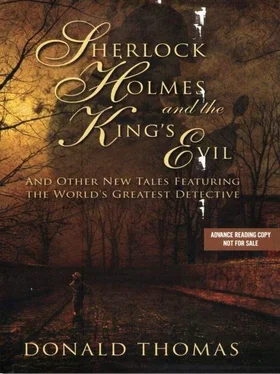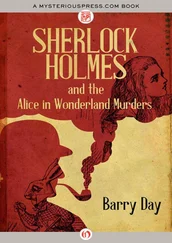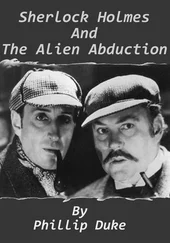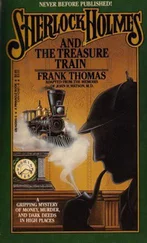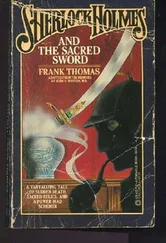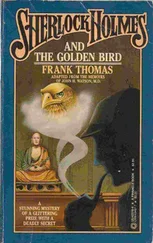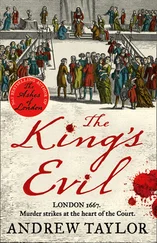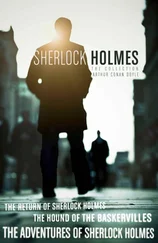“Why can we not eavesdrop through our own efforts?”
“Because we should have to break the American diplomatic code, before we can get at Zimmermann’s telegrams. Imagine a friendly power discovering that we had deliberately broken its code and were reading its confidential messages. In any case, Balfour at the Foreign Office has categorically forbidden it-at eight o’clock last night. We can only sit here and see if the ciphers in the German Diplomatic Code-13042-resume.”
“Well here’s a pretty pickle!” I said helplessly.
“Not quite. Stockholm is a link in the route. I have been trying my hand at the recent Swedish ciphers in our archives-so far without much reward. They have never merited attention before. I have established, however, that the new Swedish envoy in Mexico City has German sympathies. In one case, he has so far forgotten himself as to send in plain text an appreciation of the situation in Mexico. Unforgivably careless.”
Holmes drew a transcript from his pocket and read out what he had copied.
“Dated 1 September 1916. President Carranza, who is now openly a friend to Germany, is willing to provide support if necessary, and if possible, for German submarines in Mexican waters.”
The chill that ran through my blood was no figure of speech.
“For the U-boats from Wilhelmshaven!”
“It had clearly been arranged before they sailed.” Holmes continued to read the Swedish envoy’s report.
“The Imperial German government proposes to employ the most efficient means to annihilate Britain as its principal enemy. Since it intends to carry its operations across the Atlantic with the object of destroying its enemy’s merchant fleet, it will need shore bases to fuel and supply the submarines. In return, Germany will treat Mexico like the free and independent nation which it is.”
Holmes paused.
“There is a good deal more but that is the gist of it.”
I looked round the dim, gloomily-boarded watchroom.
“And the Americans know nothing of this?”
“No one else knows as yet. Arthur Balfour at the Foreign Office fears that if we reveal the contents of the Swedish telegram now, senior figures in America will treat it as a British hoax, designed to draw them into the war. In any case, it is no more than the opinion of one diplomat. No more than a foreign correspondent in Mexico City might write in his newspaper.”
There were so many fragments in this mystery. We needed one more which must be, to put it crudely, the centrepiece of the puzzle. For the time being it seemed as far away as ever. Neither Holmes nor I were great believers in sudden strokes of luck providing an answer to an insoluble problem. Nor was it so here. What came our way was not the answer to our problem but an Englishman who could unveil the clues, Mr Varney of Mexico City.
Holmes had never met his protégée face-to-face. Mr Varney was a printer who had been in trouble a year or two before. Unknown to him, several of his workers had made blocks, which they then used for printing off counterfeit small-denomination Mexican currency. When Mr Varney discovered this crime, he hurried to report it. To his dismay, he was arrested as though he were the culprit, brought before a revolutionary tribunal and sentenced to be shot.
His sister, Miss Varney of Muswell Hill, hurried to Baker Street and recited a tearful story to Sherlock Holmes, while her brother in his cell awaited a summons from the firing-squad. Holmes at once secured the intervention of the Foreign Office in London and the Mexican Ambassador was summoned. In Mexico City, the British Minister confronted President Carranza himself. Between them, Mr Balfour and his Minister persuaded the Mexican authorities that Mr Varney was unlikely to be the originator of a plot to forge notes that were worth only a few English pennies. Within two days he was released.
Mr Varney had vowed to do anything for Holmes in return. Several months ago, he had redeemed this pledge by infiltrating the office of Posts and Telegraphs in Mexico City. Under revolutionary law, coded telegrams were forbidden for fear that they might be used to start yet another revolution. However, the government minister responsible frequently permitted commercial codes to escape scrutiny, in exchange for a small bribe. Mr Varney, in his turn, had been able to bribe a lesser functionary. This man would alert him to the texts of incoming Western Union telegrams from Count Bernstorff in Washington to Minister Eckhardt at the German Mission in Mexico City.
“It is simple enough,” said Holmes, next morning at the breakfast table. “The United States Embassy in Berlin may forward German telegrams to the State Department in Washington -and so to the German Embassy. However, the State Department will not forward them to the German Minister in Mexico City. In any case, there is nothing beyond Galveston except the services of Western Union. Mr Varney is able to confirm that such telegrams are passing to Herr Eckhardt. They are in code, but any coded texts in the archives of Western Union in Mexico City will henceforward be available to us. Perhaps we shall no longer be working blindfold after all.”
Within days there came into our hands at Baker Street, late one afternoon, a wire from Mr Varney. It had been forwarded by courtesy of Captain Guy Gaunt, the British Naval Attaché in Washington, who was also Naval Intelligence officer at the embassy. This wire accompanied the secret message which is known to history as the “Zimmermann Telegram”-and which the reader will find quoted as a coded text at the opening of this chapter. What follows is the best sense that Sherlock Holmes and I could make of it that evening.
We sat at either side of the work-table while Holmes made two copies of the coded message and passed one to me. I hardly knew how to start upon it but the keen energy of my friend’s brain began to illuminate the darkness of the cipher like forked lightning.
“Let us dispose of the first two groups of numbers, Watson. At the start, 130 is simply the number of the telegram and tells us nothing. The next, 13042, is the current prefix for communications in the German diplomatic code and tells us a good deal. Then you will see 13401, which identifies its source as the German Foreign Office, not the embassy in Washington. The source, if not the message, is genuine. The next item, 8501, confirms that this began its journey as a ‘Most Secret’ telegram from Berlin to Count Bernstorff, who has now forwarded it to Mexico City. Between them, such clues narrow our area of search a little.”
“We have intercepted no messages between Berlin and Washington in the past fortnight,” I said cautiously, “May this not be a hoax of some kind by the German intelligence service?”
He frowned and ran his pencil across the rows of numbers.
“I think not,” he said presently, “By its number this is a recent telegram which Zimmermann has passed to Bernstorff under the cover of the United States diplomatic code. Had Bernstorff not forwarded it to Mexico City, we should never have seen it. I believe that disposes of any hoax. Now then, there are recurring words in this cipher and I fancy they will show us the way”
His pencil was busy for a moment. Then he looked up.
“The framework of the telegram is in a cipher system we have encountered before, therefore what follows must be related to it. The message, I concede, appears to be encrypted according to a new code, that is the challenge, but the system which sustains it should be the same.”
He pushed his paper across to me.
“See here. In the preliminary instructions, we have 17214, which has previously been used for ganz geheim-strictly secret. Well that is no surprise-it is an old friend to me. And then, here, 6491 11310 18147. That is also familiar from previous use. Selbst zu entziffern-decipher this yourself. From there on the code has been varied and everything is a little opaque.”
Читать дальше
